Why is white radish useful and how to grow it in the garden
Radish is a common garden plant that has been cultivated in Russia for a very long time. It is not only a tasty component of many salads and cold snacks in cooking, but also a valuable source of nutrients: it contains a huge variety of vitamins, specific essential oils, it is also appreciated as a remedy for coughs and a number of other diseases. At the same time, oddly enough, it is inferior in popularity radishalthough it is much easier to grow it. If you are interested in exactly the white radish, cultivation and care will not require a lot of effort.
Content:
- General description of white radish
- White radish: reproduction and care
- Useful properties of white radish
- Contraindications for use
General description of white radish
The radish is a biennial cruciferous plant that has a long history of growing wild in many parts of Europe and Central Asia. The plant forms a root crop in the first year of life, in the second year it gives rounded the seeds... The root crop can have a wide variety of colors: black, white, purple, and green. Most varieties have a high content of essential oils, which gives the root vegetable pulp pungency and bitterness, which makes it a good snack that stimulates the appetite.
Among all the variety of species, the daikon white radish is considered the most exotic. It has a pure white juicy pulp and is distinguished by a special sweet-spicy taste. However, the daikon is more akin to turnips, and the white radish familiar to Russians is a rather distant relative.
White radish is one of the most unpretentious and hardy plants, it easily tolerates almost any climatic conditions.
This allows it to be grown in central Russia and Siberia; suitable conditions can be created for it even in the northern regions. If you start sowing on time and organize the cultivation correctly, you can get two in one season harvest... There are a lot of varieties of white radish, the most common among them are "Fang of the Elephant" and "Minovase".
This is a cold-resistant plant that can withstand frosts on soil up to -5 degrees, shoots begin to grow already at +4. Most of the white varieties can be classified as winter ones, they are well stored, and they are harvested until late autumn. This plant deserves good care, and a good harvest will add variety to your daily menu.
White radish: reproduction and care
For good growth and large root crops, the radish needs to provide good conditions. She loves moist loamy soils, rich in humus, largely depends on the amount of nutrients in the soil harvest.
It grows best in areas where it was previously grown. strawberry.
The earth must be carefully dug up, the depth of the dug-up layer is at least 30-35 cm.Radish is not recommended to grow in those places where it used to grow cabbage or radish, otherwise the plant will lack nutrients.
White radish care is based on several basic principles:
- Winter varieties begin to be planted from June 25, the planting season ends on July 10. The seeds should be brown: if they are black or gray, this usually indicates that rotting has begun, which reduces germination.
- Seeds nests of 3-4 are planted on the bed, and at least 15 cm should remain between these nests. 5-6 days after the emergence of shoots, you will have to carry out the first thinning and leave only the strongest plants in the garden.
- White radish requires thorough, abundant watering, it can be carried out once a week. The amount of water per square meter of the bed reaches 10-12 liters so that the plant receives enough water, and the bud remains moist for a long time.
- For feeding use mainly mineral fertilizers, during the growing period, two dressings are carried out. For the first time fertilizers they are applied after the appearance of the first leaves, the second time - on the 25-30th day after the first feeding, by this time the roots usually begin to form. For feeding, you will need 20 g of urea, 15 g of potassium chloride and superphosphate in an amount of 60 g.
- For a good harvest, you will need to periodically look after the plantings. You will need to delete weedsso that they do not take up useful space from root crops, periodically spud the plants and loosen the soil.
- Harvesting of winter varieties begins in mid-September, by which time the radish will form dense roots 3-4 cm in diameter and more. After harvesting from root crops, it is necessary to shake off the ground, the tops are cut from them, while the root crop itself should not be damaged.
For temporary storage, the radish can be refrigerated; it can lie for up to 20 days. For a longer saving, it is placed in a cellar and sprinkled with sand. The winter round white radish can be stored all winter like many other varieties.
The cultivation rules have been cultivated for a very long time, and they will be slightly different for winter and summer varieties. If the summer varieties are planted too late, you may not wait for the root crop at all: the plant will spend all its energy on the flower arrow. It's all about not only soil temperature, but also a decrease in daylight hours. If you plan to harvest root crops in the fall and store them for a long time, you need to choose the right variety.
Useful properties of white radish
Why is white radish good for you? This plant has been known for a very long time: it was grown in Ancient Greece and Ancient Egypt, and everywhere it was treated as a valuable food product. It is a natural source of phytoncides - substances that kill disease-causing bacteria, so it helps to improve immunity and is used to fight colds.
In addition, it has several other valuable properties:
- It contains a lot of vitamin C and more. Natural vitamins awaken the body's vitality, helping it fight disease. Radish contains much more vitamins than many other root vegetables.
- Its calorie content is only 36 kcal per 100 g, which makes it an excellent dietary product. The high fiber content helps to activate the intestines, almost all garden plants of the cruciferous family are used to improve the functioning of the digestive tract. Eating it before dinner improves appetite and helps you better taste other foods.
- It is a source of a number of trace elements: it contains magnesium, phosphorus, iron, potassium and much more. Such a composition has a beneficial effect on the blood, the use of radish helps fight anemia and restores strength.
- In folk medicine, it has long been used as an effective cough remedy. It warms, has a healing effect and awakens the body's defenses.
- This is an excellent natural medicine for combating gallstone disease, cholecystitis, various kidney diseases, etc. This is a real natural pharmacy, which is very easy to grow in your own garden.
The properties of white radish are all the more valuable because it is most often consumed fresh and is not subjected to any heat treatment.It can be eaten with oil and salt, salads with grated radish will be very tasty and healthy. In addition, this is a spicy seasoning, which, along with horseradish and mustard, can be served with hot meat dishes. All this makes it a very useful plant, which many people undeservedly do not pay attention to.
Contraindications for use
However, radish is not useful in all cases. Since this is a rather powerful drug, it also has its own contraindications.
The list is not too long:
- Stomach ulcer, gastritis, as well as any inflammatory diseases of the digestive system in the acute phase. Since radish contains a large amount of essential oils, it has an irritating effect on the mucous membrane, which is unacceptable for inflammation.
- Severe heart disease and kidney failure. Radish activates life processes, but this is useful only for relatively healthy people. Additional stimulation can lead to exacerbation of existing diseases, if they have gone far.
- She, like any herbal products, is also an allergen. If there are signs of hypersensitivity, it is better to refuse to eat white radish.
If you doubt whether it will be useful to you, it is better to consult with a specialist, as well as before using any potent remedy. In most cases, it has a beneficial effect on the body, but if there are any doubts, it is better not to risk it. In any case, a sensible approach to quantity is important.
White radish is an excellent assistant in the fight against various diseases and their prevention.
You can help your body overcome many diseases if you use this amazing gift of nature.
More information can be found in the ideo.



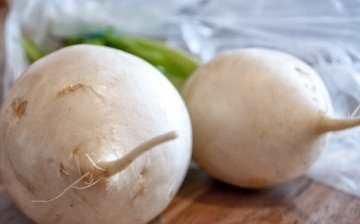
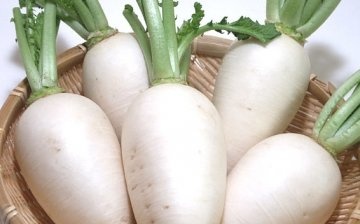
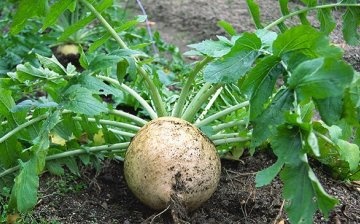
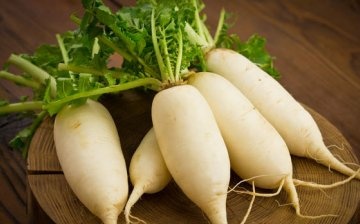
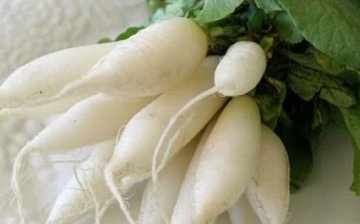





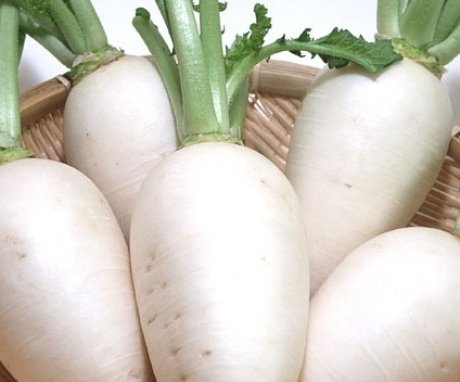
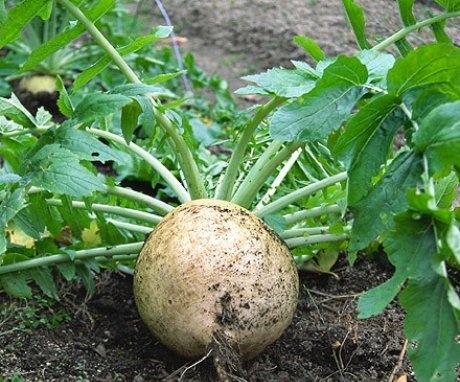
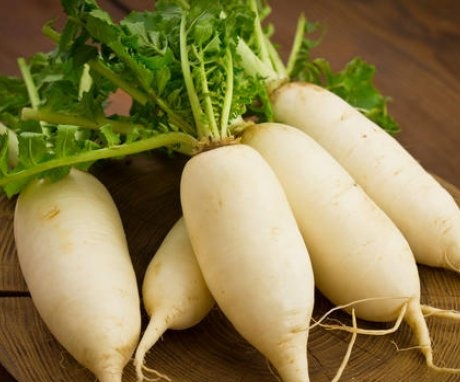
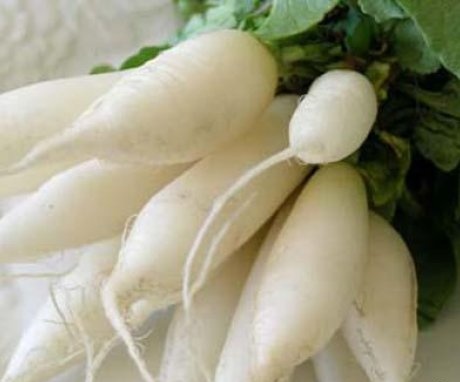
I have been growing white radish in my garden for a long time. We eat it with pleasure and for treatment. An excellent remedy for coughing: cut off the lid of the radish, pick out the middle and pour honey over it, insist, closing the lid. Then drink the resulting mixture of honey and radish juice one spoonful 3-4 times a day.